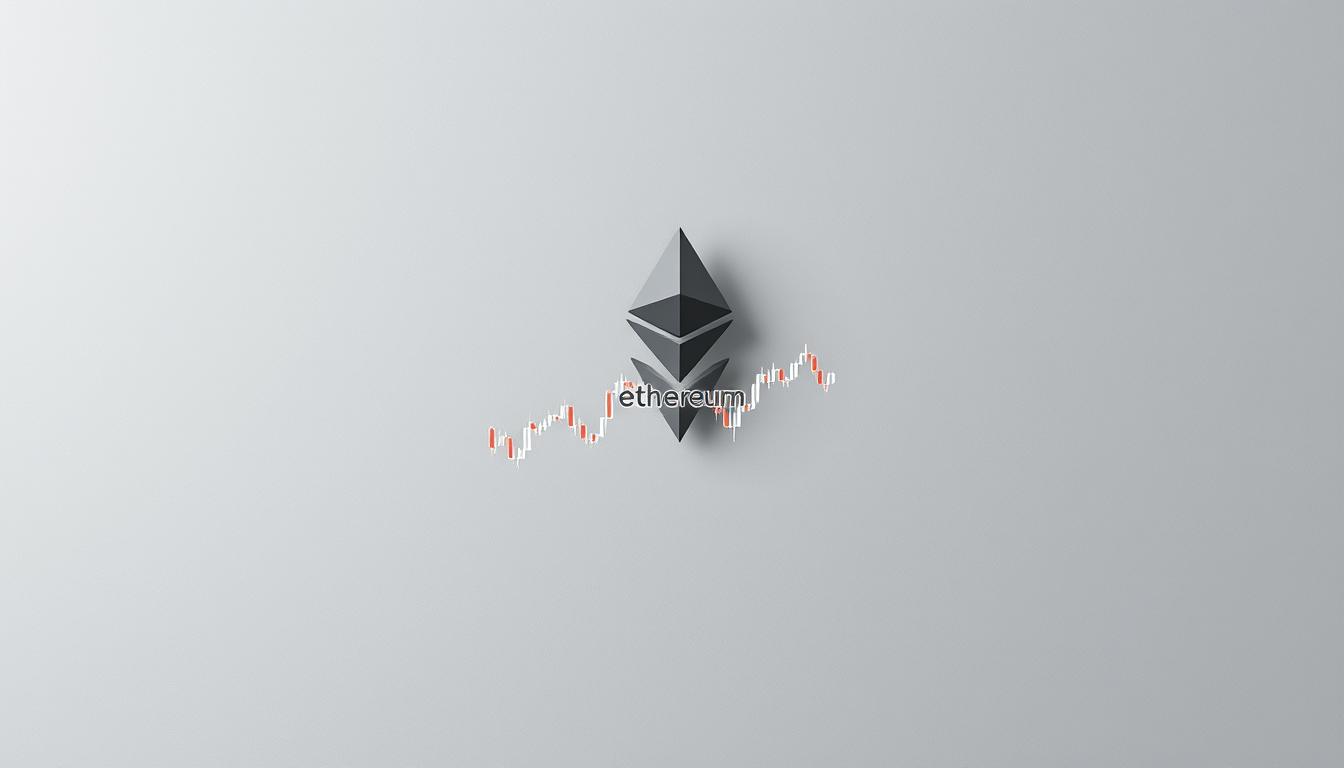Now Reading: Blockchain Technology Distributed Ledger System Explained
- 01
Blockchain Technology Distributed Ledger System Explained
Blockchain Technology Distributed Ledger System Explained

Imagine a digital record book that everyone can see but no one can change without everyone else knowing. This innovative approach to storing information represents a major shift in how we handle digital records.
At its core, this method groups digital activities into blocks that link together securely. Each block connects to the previous one, creating a chain that’s extremely difficult to alter. Multiple computers maintain identical copies of this record, ensuring everyone sees the same information.
The real power comes from how these records get updated. Instead of one central authority controlling changes, the entire network works together to validate new entries. This creates a transparent and reliable way to track digital interactions across various industries.
Key Takeaways
- Digital records are stored across multiple computers simultaneously
- Information gets grouped into blocks that form a connected chain
- Changes require agreement from the entire network
- This approach eliminates the need for central control
- Records become nearly impossible to alter secretly
- Various industries benefit from this transparent method
- The system provides enhanced security and reliability
Understanding the Fundamentals of Distributed Ledger Technology
The landscape of secure digital record-keeping is defined by a key relationship between a specific tool and the broader category it belongs to. Getting these definitions right is the first step toward true comprehension.
Defining Key Terms: Blockchain vs. Distributed Ledger
Many people use the terms interchangeably, but there is a crucial difference. A distributed ledger is a database that exists across multiple locations or among various participants. This setup eliminates the need for a central authority to maintain the records.
A blockchain is one type of this ledger. Its unique feature is how it structures data. Information gets grouped into blocks, which are then chained together in chronological order. This specific method creates an immutable and verifiable history.
How Decentralization Transforms Data Management
Traditional systems rely on a single entity to control and validate all entries. This creates a single point of failure and requires complete trust in that central party. The entire system is vulnerable if that one point is compromised.
In a decentralized network, control is spread out. Many computers (nodes) hold a copy of the ledger. Any new entry must be agreed upon by the network through a consensus process. This distribution of responsibility enhances security and transparency for everyone with access.
Blockchain technology distributed ledger system
The strength of this digital framework lies in its clever combination of several advanced methods. These include peer-to-peer networking, digital signatures, and powerful encryption.
These elements work together to create a secure and decentralized way to handle information. Each new activity is grouped and sealed with a unique cryptographic signature, known as a hash.
This hash acts like an unchangeable fingerprint. It links each new group of data to the one before it, forming a continuous and tamper-resistant sequence.
Every participant in the peer-to-peer setup, called a node, keeps a copy of the entire record. This means the database is synchronized across the network at all times.
To add new information, the nodes must agree on its validity through a consensus process. This eliminates the need for a central authority to record transactions.
| Core Component | Primary Function | Key Benefit |
|---|---|---|
| Digital Signatures | Verify the origin and integrity of data | Ensures authenticity |
| Peer-to-Peer Network | Distributes the ledger among all nodes | Removes central control |
| Cryptographic Hashing | Creates unique, unchangeable links between blocks | Guarantees immutability |
| Consensus Mechanisms | Enables network-wide agreement on new entries | Maintains accuracy and trust |
While the linear chain is the most well-known structure, other types of architectures exist. These alternatives, like directed acyclic graphs, organize data differently but uphold the same decentralized principles.
Evolution and History of Blockchain and DLT
Modern decentralized systems have roots that stretch back to computing innovations of the 1990s. The concept of multiple machines working together existed long before the first blockchain appeared.
The Emergence from Early Distributed Computing
Businesses and governments used early distributed computing for decades. In the 1990s, multiple computers in different locations could solve problems together.
They shared data across network infrastructure and returned solutions to a central location. This foundation enabled what would become distributed ledger technology.
Milestones from Bitcoin to Modern Platforms
The pivotal moment came in 2008 with Bitcoin’s introduction. Satoshi Nakamoto created the first practical blockchain implementation.
Bitcoin organized transactions into blocks that linked cryptographically into a chain. Each block contained a timestamp, creating an immutable record over time.
Ethereum’s 2015 launch brought significant changes. It expanded capabilities beyond currency to support smart contracts and decentralized applications.
Modern platforms like Hyperledger evolved from Bitcoin’s single-purpose design. They became scalable solutions for diverse industries worldwide.
How Distributed Ledgers Enhance Security and Transparency
At the intersection of security and openness lies one of the most valuable aspects of modern digital record-keeping. These systems provide both ironclad protection and complete visibility through advanced cryptographic methods.
Cryptographic Techniques and Immutability
Advanced encryption methods create an unbreakable chain of trust. Each piece of information receives a unique digital signature that cannot be forged.
Once recorded, this data becomes permanent. The blockchain structure ensures that changing historical records would require altering every subsequent entry across the entire network. This mathematical certainty provides unprecedented security against tampering.
Transparency Benefits of a Shared Ledger
Authorized participants can independently verify all transactions without relying on central authorities. This shared visibility creates built-in accountability.
The open verification process eliminates the need for expensive audits. Everyone sees the same authenticated information, building trust through mathematical proof rather than institutional reputation.
This combination of cryptographic protection and shared access represents the core benefits of modern ledger systems. It establishes a new standard for transparency in digital record-keeping.
Consensus Mechanisms: Proof of Work, Proof of Stake, and Beyond
Consensus protocols serve as the democratic backbone that enables disparate participants to validate information collectively. These systems solve the fundamental challenge of achieving network-wide agreement without central authority.
Exploring Proof of Work
Proof of Work requires miners to solve complex cryptographic puzzles. The first to solve earns the right to add new transactions to the chain.
This method creates security through significant energy investment. Bad actors would need enormous computational power to manipulate the network.
An Overview of Proof of Stake and Delegated Models
Proof of Stake selects validators based on their cryptocurrency holdings. Participants stake their assets as collateral for the privilege of validating transactions.
Delegated Proof of Stake further optimizes this process. Network members vote for a limited number of validators, improving speed while maintaining security.
| Consensus Type | Validation Process | Energy Impact |
|---|---|---|
| Proof of Work | Miners solve puzzles competitively | High energy consumption |
| Proof of Stake | Validators chosen by stake amount | Significantly reduced energy |
| Delegated Proof of Stake | Elected validators process transactions | Minimal energy requirements |
Different types of consensus mechanisms offer varying balances of security, efficiency, and decentralization. Each approach represents a unique solution to the challenge of network agreement.
Smart Contracts and Their Impact on Automation
Self-executing digital contracts are transforming how businesses handle agreements and transactions. These programmable smart contracts contain terms written directly into code rather than traditional legal documents.

Smart contracts eliminate intermediaries by automatically executing when specific conditions are met. For example, insurance payments release instantly when claims are approved. This automation streamlines complex transactions that previously required manual processing.
The automation significantly reduces completion time for business operations. Processes that took days now execute in minutes. This speed comes with reduced human error and increased reliability.
Practical applications include transferring corporate bonds and managing supply chain logistics. These smart contracts work on the blockchain to ensure transparent execution of every step in the process.
This approach enhances transparency while maintaining security through cryptographic protection. The combination of smart contracts and blockchain technology creates new possibilities for automating business transactions efficiently.
Decentralization and Its Influence on Modern Systems
Traditional databases operate under single-entity management, creating inherent vulnerabilities in modern systems. This centralized approach places complete control in the hands of one authority, whether a bank, government, or corporation.
Decentralized systems distribute this control across all network participants. Instead of relying on a central authority to validate transactions, the entire network reaches consensus. This eliminates single points of failure that could compromise entire systems.
The resilience comes from how data gets verified across network nodes. Every participant maintains an identical copy of the records. Any attempt to alter information would require changing majority copies simultaneously.
This approach transforms how we establish trust in digital interactions. Participants need not know or trust each other personally. They instead trust the mathematical certainty of the consensus mechanism.
Decentralization also democratizes access to information and services. People worldwide can interact with the blockchain without permission from any central authority. This creates new opportunities for financial inclusion and censorship-resistant platforms.
The blockchain structure ensures that no single entity can unilaterally change data or restrict access. This distributed power model represents a fundamental shift from traditional hierarchical control structures.
Applications Across Industries: Supply Chain, Healthcare, and More
Businesses worldwide are discovering practical uses for decentralized record systems across multiple sectors. These applications demonstrate how shared digital approaches solve real business challenges.

Case Study Insights: Enhancing Supply Chain Efficiency
The supply chain represents one of the most impactful use cases. Complex networks involving multiple organizations benefit from shared, unchangeable records.
Fujitsu’s Rice Exchange tracks rice from source to consumer. It records sources, prices, insurance, shipping, and settlement information. This creates complete transparency throughout the entire process.
Home Depot uses IBM’s solution to resolve vendor disputes. The shared ledger provides accurate transaction records that all parties can verify. This improves supply chain efficiency significantly.
Innovations in Healthcare and Financial Services
Healthcare applications securely store sensitive medical data. Authorized providers can access patient information while maintaining privacy. Recent research shows how healthcare systems benefit from these approaches.
Financial services use smart contracts to automate insurance claims and payments. These solutions reduce processing time and costs. Financial innovations also include asset tokenization for fractional ownership.
| Industry | Primary Application | Key Benefits |
|---|---|---|
| Supply Chain | Product tracking and verification | Reduced fraud, improved transparency |
| Healthcare | Secure medical records management | Enhanced privacy, data integrity |
| Financial Services | Automated contracts and payments | Faster processing, lower costs |
| Insurance | Claims verification and processing | Reduced fraud, automated payments |
These diverse industry implementations show the broad potential of decentralized approaches. Each sector finds unique solutions to its specific challenges.
Real-World Use Cases and Industry Implementations
From voting systems to property records, various sectors benefit from transparent digital verification approaches. These practical applications demonstrate how organizations solve real business challenges.
Identity management solutions create secure digital identities that individuals control. This prevents identity theft through cryptographic protection. Voting systems use this approach to ensure election integrity.
Property ownership records become tamper-proof with this method. IPwe combines IBM’s approach with artificial intelligence for a global patent market. This creates transparent intellectual property management.
IBM’s solutions help companies trade across borders efficiently. The shared network makes transaction records visible to authorized parties. This reduces disputes and speeds up settlements.
The we.trade platform transforms trade finance for business operations. It replaces paper documentation with digital verification. These industry implementations show the technology’s practical value.
Each transaction on these platforms benefits from the underlying blockchain infrastructure. Various industry sectors now rely on these production-ready solutions. The technology has moved beyond experiments to support critical operations.
Technical Deep Dive: Cryptography, Nodes, and Data Integrity
Behind every secure digital transaction lies a complex system of interconnected data blocks maintained by a network of independent computers. This architecture ensures that recorded information remains accurate and tamper-resistant.

Each activity becomes a permanent entry through advanced cryptographic methods. These techniques create mathematical bonds between individual records.
How Blocks are Linked and Secured
Every transaction forms a distinct data unit containing comprehensive details. This includes participant identities, asset transfers, timestamps, and specific conditions.
Cryptographic hashes create unique fingerprints for each unit. Each fingerprint incorporates data from the previous entry, forming an unbreakable chain.
Timestamps record the exact moment of addition to the sequence. This establishes chronological order and enhances verification capabilities.
Any attempt to alter historical information would change the cryptographic fingerprint. Subsequent entries would immediately reveal the tampering attempt.
Data Validation and the Role of Nodes
Network participants operate computers that store complete copies of the record. These devices independently verify each new transaction before acceptance.
Validation involves checking digital signatures and transaction rules. The network must reach consensus before permanently adding new entries.
Different types of nodes serve distinct functions within the system. Full nodes maintain complete historical records, while lightweight nodes store essential information only.
| Node Type | Storage Capacity | Primary Function |
|---|---|---|
| Full Nodes | Complete historical record | Full validation and storage |
| Lightweight Nodes | Essential data only | Basic verification and access |
| Mining Nodes | Complete record + processing power | Block creation and validation |
This distributed approach maintains data integrity across all participants. Changes propagate simultaneously throughout the entire network after consensus approval.
Challenges and Limitations of Distributed Ledger Systems
Despite their revolutionary capabilities, distributed ledger technologies confront multiple challenges that currently limit their practical application. Organizations must understand these hurdles before committing to implementation.
Scalability remains a critical concern. As participant numbers grow, network performance can decline significantly. Processing times increase while costs rise for each transaction.
Energy consumption presents another major obstacle. Some consensus mechanisms require substantial computational power. This raises environmental concerns as adoption expands globally.
Implementation complexity creates significant barriers. Specialized technical knowledge is essential for successful deployment. Many organizations lack the internal expertise needed for proper maintenance.
The immutable nature of records creates its own challenges. While preventing tampering is valuable, correcting errors becomes difficult. Changes require network consensus or special permissions.
| Challenge Area | Primary Impact | Current Status |
|---|---|---|
| Scalability Limits | Reduced transaction speed and higher costs | Active research ongoing |
| Energy Consumption | Environmental concerns and operational expenses | New consensus models emerging |
| Technical Complexity | High implementation and maintenance barriers | Specialist knowledge required |
| Regulatory Uncertainty | Risk management and compliance challenges | Standards developing slowly |
Regulatory frameworks remain underdeveloped across most jurisdictions. This uncertainty discourages investment and adoption. Organizations need clearer guidelines before widespread implementation.
These limitations highlight the current state of blockchain development. While the technology offers significant potential, practical solutions must address these challenges first.
Future Trends: Scalability, Energy Concerns, and Regulation
The horizon for digital record systems shows remarkable growth potential. Market projections indicate nearly $1 trillion valuation by 2032, with a 56% annual growth rate since 2021.

This expansion drives innovation across three critical areas. Technical advancements address scalability, while environmental concerns shape energy efficiency. Regulatory frameworks guide global adoption patterns.
Emerging Solutions for Scalability
Layer-two protocols process transactions outside the main chain. This approach dramatically increases capacity while reducing settlement time.
Sharding techniques partition networks into smaller segments. Each segment handles its own transactions, improving overall system performance.
New consensus mechanisms increase throughput significantly. These solutions maintain security while supporting more participants.
Regulatory Impacts and Global Adoption
Governments worldwide develop frameworks for digital ledgers. They balance innovation with consumer protection needs.
Legal clarity becomes essential for smart contracts enforcement. Organizations require certainty about compliance requirements.
Global adoption patterns show regional variations. Some jurisdictions embrace cryptocurrency, while others develop central bank digital currencies.
Integration with artificial intelligence and IoT creates powerful combinations. These partnerships enable new business models and capabilities across industries.
Innovations at the Intersection of Blockchain and Emerging Technologies
The fusion of blockchain with cutting-edge technologies like AI is reshaping how organizations operate across industries. This combination creates powerful synergies where immutable records provide trustworthy data for intelligent analysis.
In supply chain management, blockchain ensures product authenticity while AI analyzes data to optimize logistics. This process helps business operations predict demand and prevent disruptions.
Financial services benefit from AI-driven risk assessment combined with secure transaction records. Automated systems work together to detect fraud while maintaining compliance.
Healthcare applications show remarkable potential. AI analyzes patient data for personalized treatments while blockchain solutions protect medical privacy. Authorized providers access secure records through trusted networks.
The Internet of Things integrates with this technology to create smart systems. Devices communicate securely across decentralized networks, enabling autonomous operations.
These converging technologies transform traditional business models. They create new applications that were impossible with single solutions alone. The entire value chain benefits from enhanced efficiency and security.
Conclusion
The journey through decentralized record systems reveals a fundamental transformation in how we establish digital trust. These approaches move beyond traditional centralized models to create mathematically verifiable records that everyone can trust.
The core benefits include enhanced security through cryptographic protection and improved transparency through shared access to information. This eliminates single points of failure while streamlining complex transactions across various sectors.
From supply chains to financial services, organizations leverage this technology for accurate reporting and fraud prevention. The blockchain network ensures tamper-resistant data management that builds confidence among participants.
While challenges around scalability and regulation persist, ongoing innovations continue to expand practical applications. This ledger system represents a lasting shift toward more secure and efficient digital infrastructure.
FAQ
What is the main difference between a blockchain and a distributed ledger?
A distributed ledger is a broad term for any database spread across multiple sites or participants. Blockchain is a specific type that structures data into blocks chained together using cryptography. While all blockchains are distributed ledgers, not all distributed ledgers use a chain of blocks.
How does decentralization improve security and transparency?
Decentralization removes the need for a central authority by having many computers, or nodes, maintain a copy of the ledger. This makes the system highly resistant to tampering. Any change requires network-wide consensus, and all participants can view the transaction history, creating unparalleled transparency.
What are smart contracts and how do they work?
Smart contracts are self-executing agreements with the terms written directly into code. They run on a distributed ledger network and automatically execute actions, like transferring assets, when predetermined conditions are met. This eliminates intermediaries and reduces the risk of fraud.
What industries are adopting this technology most rapidly?
Supply chain management is a major adopter, using it for real-time tracking and proof of authenticity. The financial services industry uses it for faster, cheaper cross-border payments. Healthcare is exploring it for secure patient record management, giving patients control over their information.
What are the biggest challenges facing widespread adoption?
Key challenges include scalability, as some networks struggle with high transaction volumes, and energy consumption, particularly with proof-of-work mechanisms. Regulatory uncertainty and the need for integration with existing legacy systems also present significant hurdles for organizations.
How is the energy consumption issue being addressed?
Newer consensus mechanisms like proof-of-stake are far more energy-efficient than traditional proof-of-work. Companies like Ethereum have successfully transitioned to proof-of-stake, drastically reducing their energy use. Ongoing research also focuses on renewable energy sources for mining operations.














